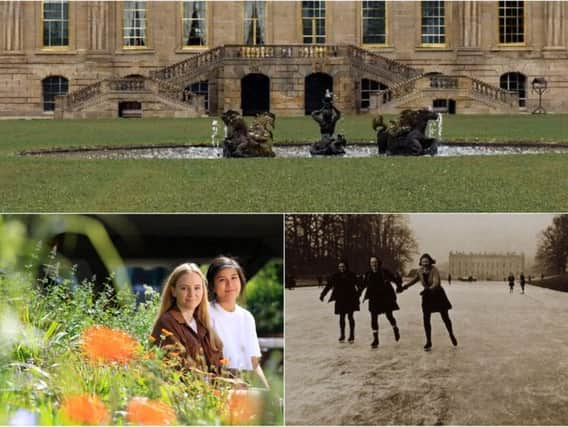Appeal launched to find surviving wartime evacuees who stayed at Chatsworth House for six years


Some 250 girls from Penrhos College in North Wales were given refuge at Chatsworth House in Derbyshire, living in dormitories in the property’s state rooms for six years.
During the day they tended the vegetable gardens to contribute to the national war effort, enjoyed ice-skating on the Canal Pond during winter months and had the run of the house, as its contents had been carefully packed away.
Advertisement
Hide AdAdvertisement
Hide AdThe three students from the University of Sheffield are searching for surviving evacuees, who were sent to Chatsworth House from September 1939 until the war finished in September 1945.
Landscape architecture students Katie Wright, 19, Carrie Bayles, 20 and Cindy To, 22 are creating a long border at RHS Chatsworth Flower Show, which runs from June 5 to 9.
Their garden border, entitled ‘A Sense of Place’, is inspired by the experience of the Penrhos girls.
Miss Wright, 19, said: “Learning about the girls and their story has touched us all personally. As women ourselves, we understand how these crucial teenage years shape the women you become and this inspired us to create a design which looks at their experience at Chatsworth.
Advertisement
Hide AdAdvertisement
Hide Ad“We would like to get in contact with the girls who boarded the house during this time, and invite them to come and see our long border. We are finding it difficult to track them down as we don’t have any contact details to get in touch.
“We would love for them to see our border and see what they think and also hear more about their time at Chatsworth.”
Chatsworth House, near Bakewell, continues to be a hugely popular tourist destination with more than 605,000 visits each year to the estate. The property was used as Pemberley, the residence of Mr Darcy, in the 2005 Pride and Prejudice film, starring Keira Knightley and Matthew Macfadyen.
A spokesman for Chatsworth House said: “Some of Britain’s country houses were used as barracks during the war and were badly damaged, but the 10th Duke Edward Cavendish, anticipating that schoolgirls would make better tenants than soldiers, arranged for Chatsworth to be occupied by the girls’ public school in Colwyn Bay. As a boarding school, it housed pupils from all over the UK.
Advertisement
Hide AdAdvertisement
Hide Ad“Almost every part of Chatsworth House was used for classrooms and dormitories, with freedom given for use of the garden, woods and park. Only the library was out of bounds.
“To protect the contents of the house only dustless chalk was permitted, written work had to be done in pencil and inkwells were banned.
“The whole of the house was used, including the state rooms, which were turned into dormitories.”
It is said condensation from the breath of the sleeping girls caused fungus to grow behind some pictures on the walls, and there was a shortage of hot water with so many people accommodated in the house.
Advertisement
Hide AdAdvertisement
Hide AdAnyone who knows an evacuee who stayed at Chatsworth can contact the students via [email protected]
FACTFILE
* Most of the UK’s country houses were put to institutional use during the Second World War.
* It took 11 days to pack away the contents of the sprawling Chatsworth House.
* The seat of the Duke of Devonshire, the house has been home to the Cavendish family since it was built in 1549.
Advertisement
Hide AdAdvertisement
Hide Ad* At 124,600 square feet, with 1,822 acres of land, the house made it into the 1966 Guinness World Record as the largest private home in Britain.
* The property’s 606ft façade is nearly twice as long as Buckingham Palace’s, and the interiors of the house span several wings, with more than 300 rooms and about five miles of corridors.
* It is estimated to be worth about £500m.
